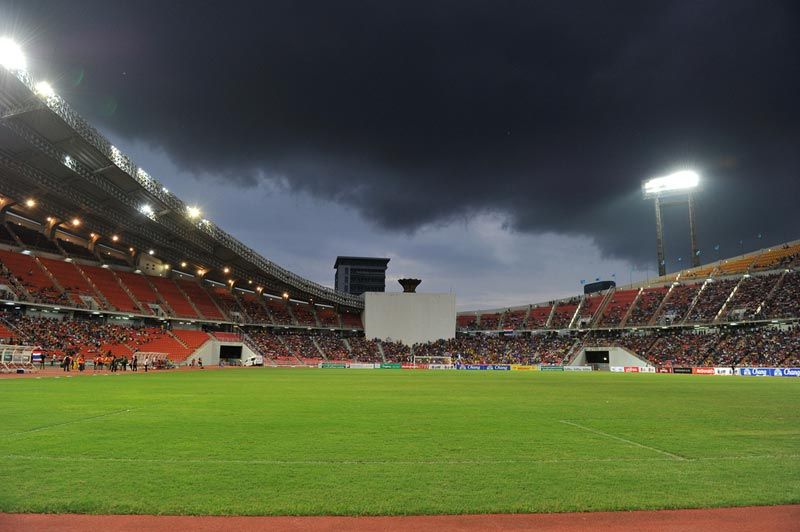Violence on the Field: History's Worst Sports Riots

What should have been an ordinary soccer game in Port Said, Egypt, between al-Masry, the local club, and Cairo's Al Ahli collapsed into disaster after a deadly soccer riot took hold, claimed the lives of over 70 people and injured at least 1,000 more.
NEWS: Are Revolutions Contagious?
The tragedy rocked the politically fragile nation, with blame for the riot being lain at the government, security forces, the soccer federation's board and the fans themselves.
Although political tensions in Egypt may have helped create the atmosphere in which this kind of devastating incident could take place, there's no doubt that the passions of sports fans elsewhere in other countries have led them down this same road before. Egypt's soccer riot ranks among the most violent in history. But as you'll see in this rundown, it's not entirely uncommon in the history of sports-related violence to see this kind of catastrophe:
Accra Stadium, Ghana, May 2001: Toward the end of a match between the Accra Hearts of Oak and the Assante Kotoko, supporters of the visiting team began hurling bottles and other objects into the field since the Assante club was down 2-1. Police responded by firing tear gas and the fans. Panic ensued and the resulting stampede claimed the lives of over 120 people.
The incident was the fourth fatal soccer-related tragedy on African soil in a month, according to a report on the incident from the CBC.
Heysel Stadium, Belgium, 1985: The European Cup finals match between Juventus and Liverpool caused so much damage that in the aftermath, British soccer clubs were prohibited from competing in mainland Europe for at least five years.
Sign up for the Live Science daily newsletter now
Get the world’s most fascinating discoveries delivered straight to your inbox.
The tragedy started when overzealous British soccer fans attempted to force their way into an area of the stadium holding the Italian soccer fans prior to kickoff. Both sides had earlier harassed one another by throwing projectiles into the other's camp. When the British fans charged, the Juventus fans were driven up against a concrete wall. Some tried to climb the wall to escape while others were crushed up against it. The wall eventually collapsed under the force of the fans.
In the end, 39 people died and around 600 sustained injuries. The teams still took the field despite the tragedy, with Juventus coming out ahead of Liverpool with a score of 1-0.
NEWS: How Riots Behave Like Forest Fires
Fenway Park, United States, 2004: Soccer, of course, isn't the only sport that can stir fans' passions to dangerous levels. Even before the Red Sox took the field at Fenway for the game that would ultimately win them the World Series, fans outside the stadium were already growing aggressive.
The celebration after the game turned violent as fans committed acts of arson and clashed with police. One fan, a young woman, died after being struck with a projectile fired by a police pepper gun.
Katmandu, Nepal, 1988: Not every sports disaster is caused by fans taking a kids' game too seriously. When hail started falling during a match at the national soccer stadium, fans rushed toward the exits to avoid getting pelted. Out of the eight available exits, the crowd of 30,000 could only access one to escape, according to a report from the Associated Press.
Ninety-three people died as a result, all of them suffocated or crushed to death.
Guatemala City, 1996 A World Cup qualifying match between Guatemala and Costa Rica turned deadly after thousands of fans who were sold fake tickets tried to force their way into the stadium. With nowhere to go, and surrounded by angry fans who turned violent, nearly 80 people were suffocated or crushed to death in the resulting stampede.
Luzhniki Stadium, Russia, 1982: In the closing moments of a game between FC Spartek and HFC Haarlem, fans, who had been crammed into a single section of the stadium with a single exit due to a smaller-than-expected attendance, began filing out with Spartek leading 1-0. When the local team scored a second goal, some fans eagerly tried to rush back to the match, only to be met with a column of spectators headed the other way.
The excitement of the goal, the narrowness of the exit and the iciness and lack of visibility of the pathway from the stadium to the outside all compounded to create a situation of panic in which as many as 340 people died (though the official death toll stands in the mid-60s), according to an account from The Guardian.
National Stadium, Peru, 1964: A disputed goal in a World Cup match between Peru and Argentina turned into what is by official counts the most deadly soccer riot in history. After a goal from Peru's side was overruled by the referees, fans grew violent, which led the police to intervene with tear gas to try to subdue the mob.
In the end, 318 people died as fans attempted to escaped the scene through the locked stadium exits.
This article was provided by Discovery News.












